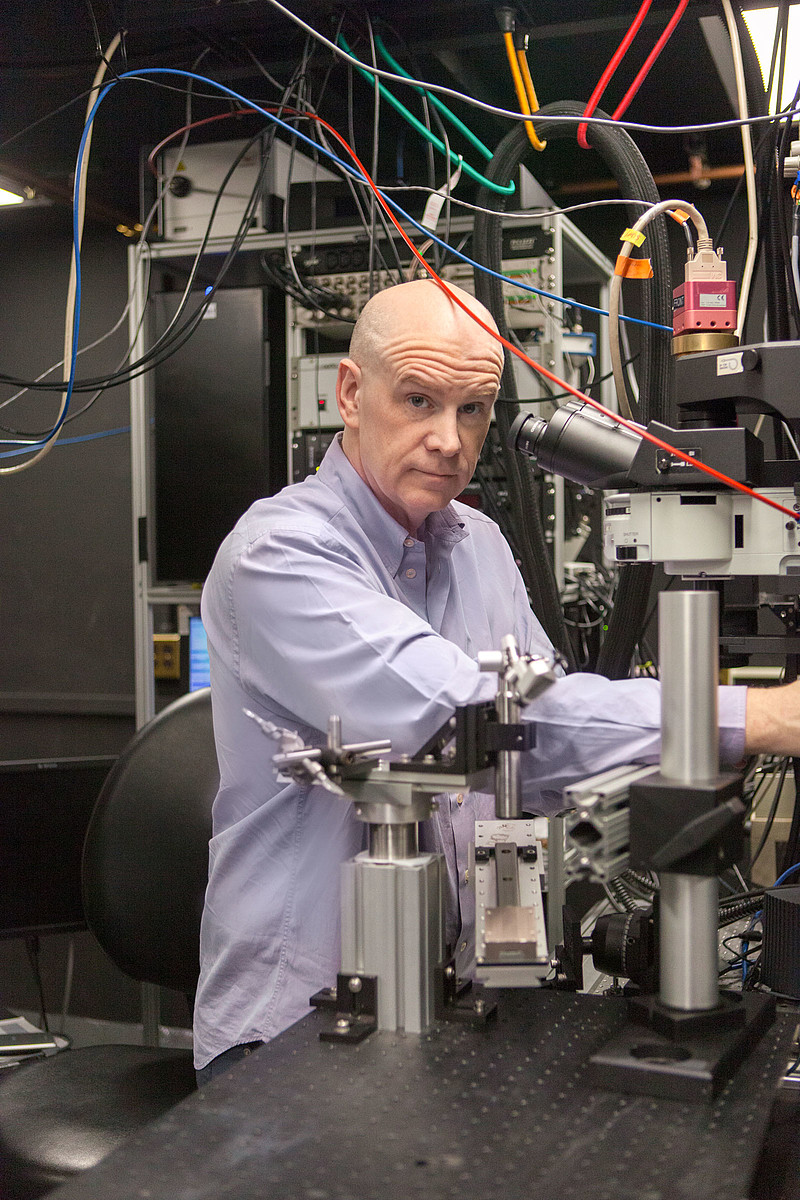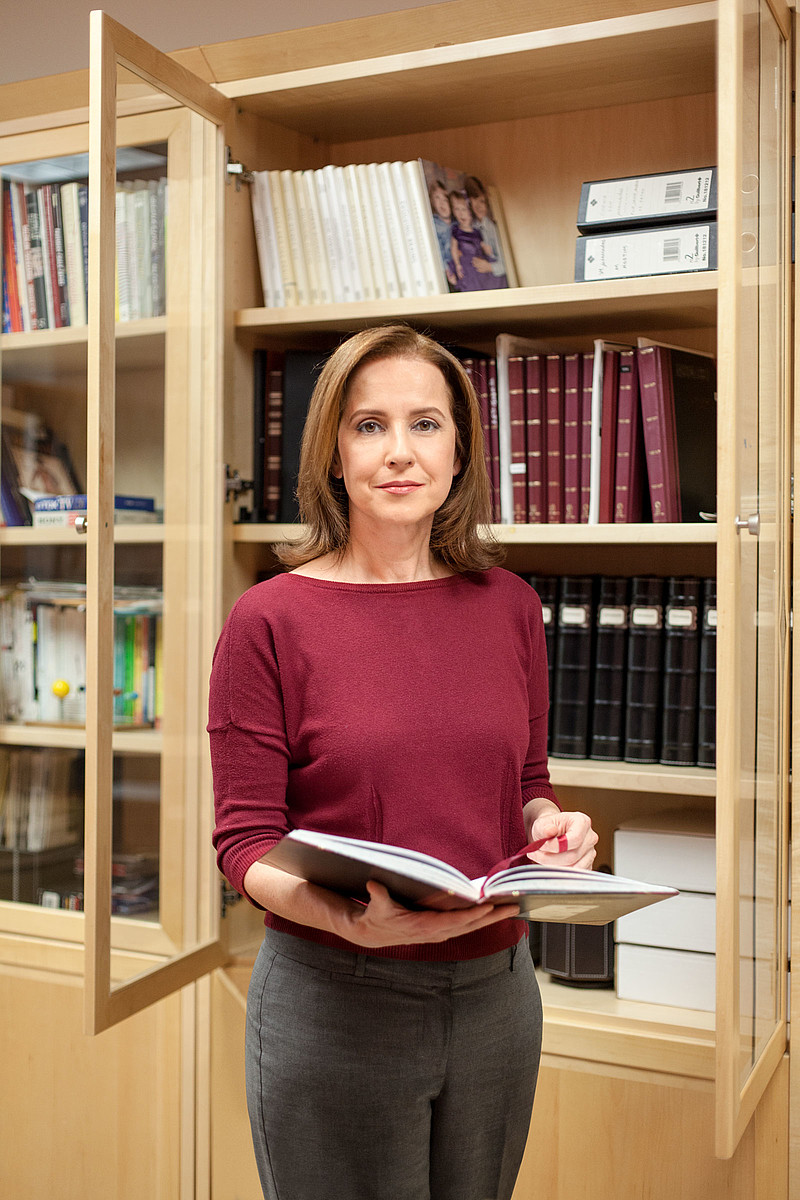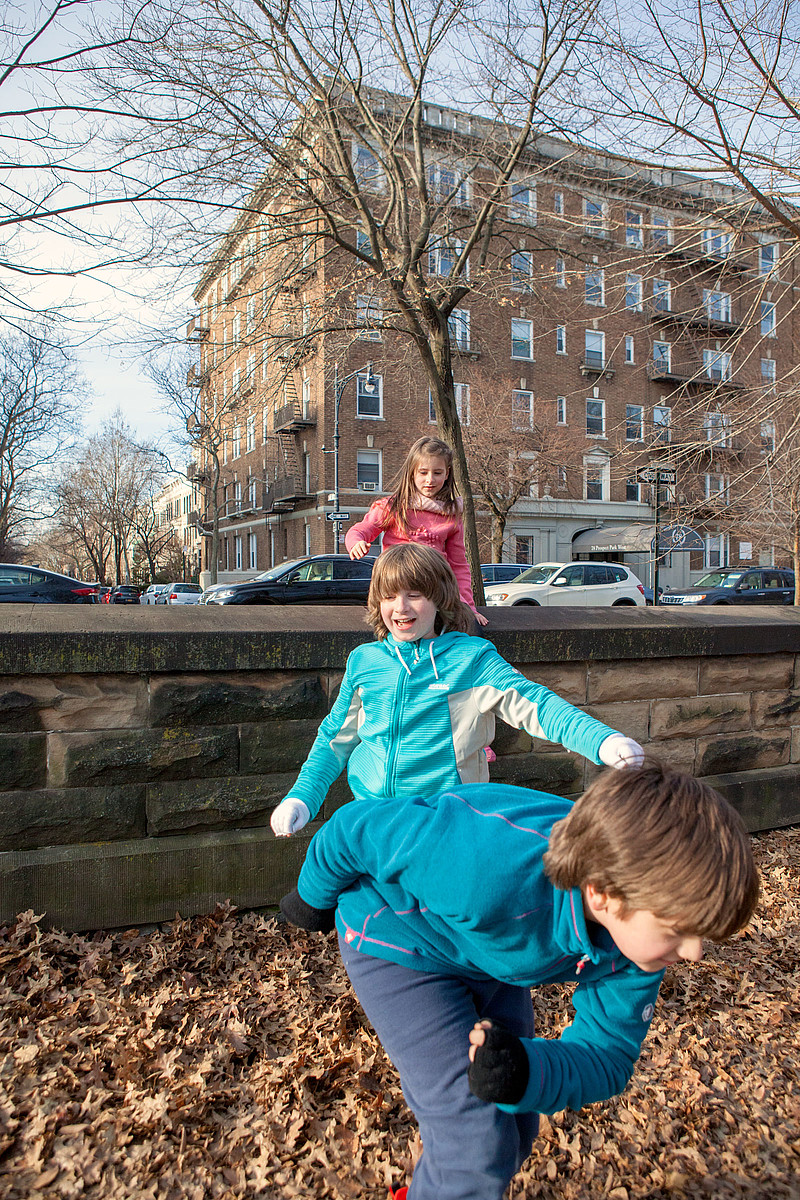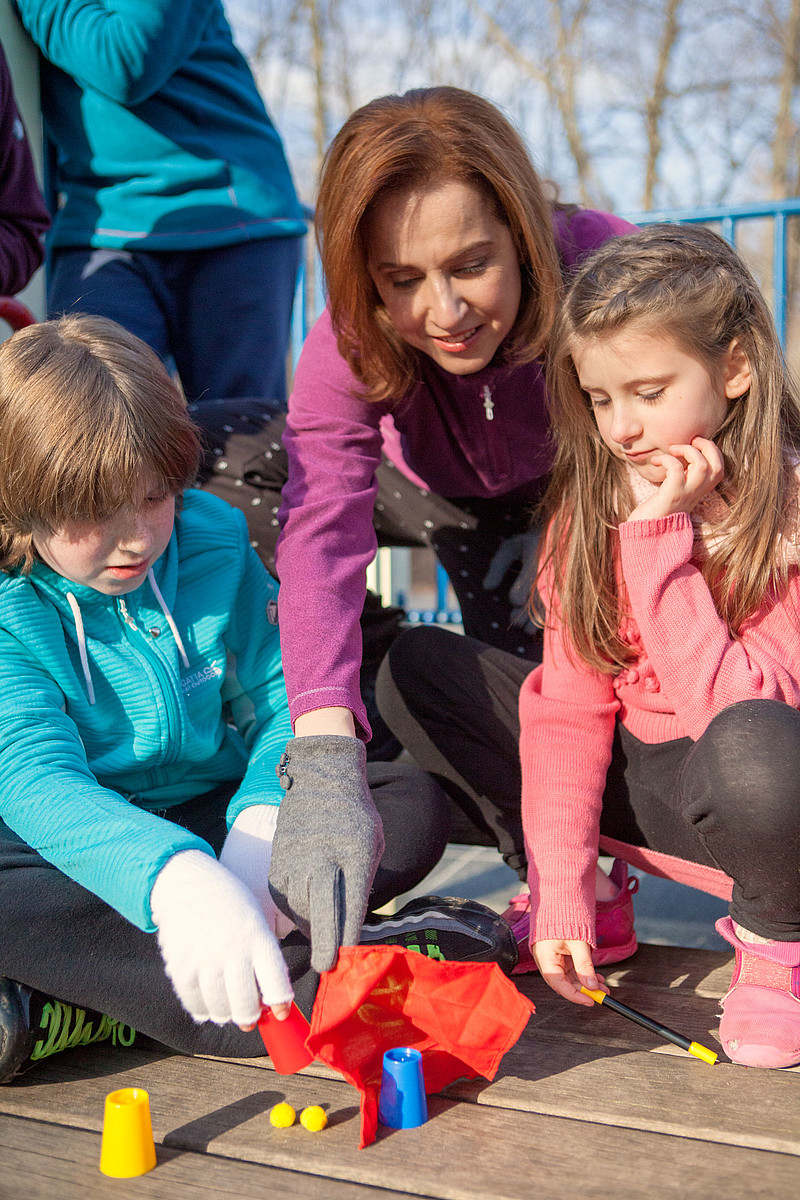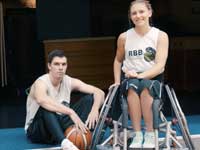Mind
&
Magic
Text: Klaus Rathje
Photography: Winona Barton-Ballentine
They live together and conduct research together. The neuroscientist couple Susana Martinez-Conde and Stephen Macknik have an unusual interest in common: neuromagic. This literally “enchanting” field of research and their close cooperation require a special partnership.
They developed neuromagic as a research field in order to gain new insights into processes in our brain in response to the tricks of magicians. When did it all start?
MARTINEZ-CONDE In 2008, we published an article about this new field of study on the neural bases of magic, that is, why magic tricks work in the brain. We also wanted to showcase the interests that magicians and neuroscientists have in common. Both professions want to understand the human mind and behavior.
What did other neuroscientists have to say about this?
MARTINEZ-CONDE Many colleagues were surprised at first but then admitted that the approach made sense and wondered why no one had thought of it before. That was a decade ago, and neuromagic has grown a lot since, although it still remains a rather small field of study.
And you discovered the topic together as partners?
MACKNIK Yes. We had already dealt extensively with illusions before, such as at large conferences where visual perception was being discussed. We later organized a conference ourselves, where we sponsored a competition for the best visual illusion, which was scientifically interesting on the one hand and fascinating for the public on the other. That’s how we managed to attract media attention for it. We followed that up with a conference on the topic of consciousness. Since the conference took place in Las Vegas, where there are many magic shows, we noticed that magicians are also true artists of consciousness. That gave us the idea to use their insights for neuroscientific research, since they are quite familiar with people’s consciousness and attention. In 2007, some of the best magicians in the world took part in our conference, such as Apollo Robbins and Mac King. They talked about what might be scientifically interesting about their profession. The New York Times ran a front-page story about it, and that’s what ultimately got the ball rolling.
Eye-tracking test: Studying eye movements during the presentation of images or videos is a typical research area for this pair of scientists.
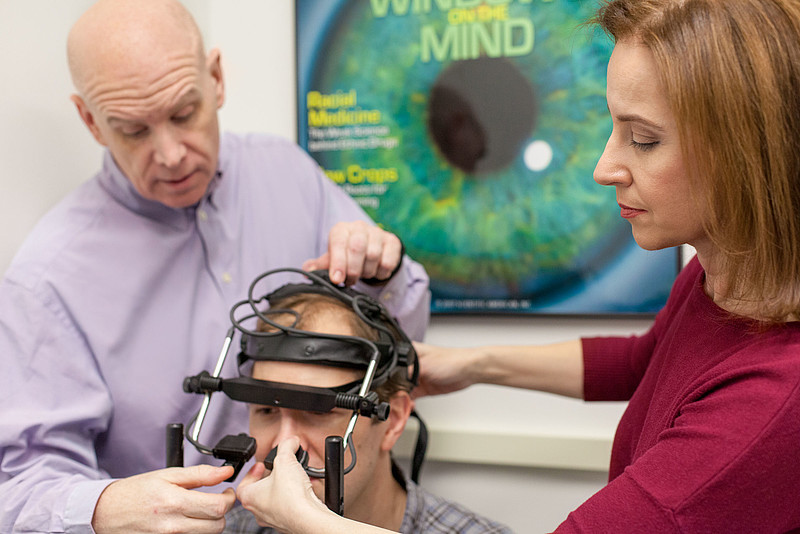
What do pickpockets in real life and magicians on stage have in common? You give attention to both professions.
MACKNIK When it comes to stealing someone’s belongings, pickpockets have techniques similar to magicians on stage. They confuse you or use one hand to direct your attention to a specific spot while using the other hand to pull something out of your pocket. If you take the subway and someone presses against you from one side, they can take your wallet from the other side. Pickpockets thus use targeted deception to manipulate your attention in a manner quite similar to what magicians do. Both benefit from the fact that people have selective attention; we only pay attention to one thing at a time.
But a clever pickpocket doesn’t just rely on distractions.
MACKNIK That’s true. A pickpocket uses not just attention illusions but also adaptation, which can work like this: The pickpocket applies firm pressure to the watch that you wear on your wrist and then takes it off. Because he previously touched you on that spot briefly, you believe the watch is still there, because you think you can still feel it. The thief uses the pressure to activate the neurons in your arm. When the pressure declines, these neurons create an afterimage of where you still perceive the watch to be. At this very moment, you are less sensitive – and the thief uses precisely this moment to take the watch off your wrist without you noticing it.
Why is it so easy to mislead us?
MARTINEZ-CONDE At first we thought the brain was more active in the area it was focusing its attention on, but that’s not true. It’s not that it is more active, but that everything else is suppressed. That’s why we don’t notice when the magician makes a coin disappear in their hand after they have just drawn attention to their other hand. We need to keep in mind that a magician doesn’t distract you but makes you concentrate very strongly on the wrong thing. It’s like mental Jujitsu: the power of an audience member’s mind is directed against itself.
Would you two as experts still be able to be deceived with such tricks?
MACKNIK Yes, absolutely! And while we’ve sometimes heard from magicians that they were a little sad about not being able to experience this magic at all like the audience does, I don’t think that’s true. Even if you know all the tricks and how they work, you can still fall for them, because many tricks work with a combination of different methods. And if the magician does them well, the viewer never knows exactly which methods were used. A magician and a neuroscientist do not have a “better” brain. For magicians who create visual afterimages and deceive the neurons in our eyes, their methods work just like the example of the pickpocket and the wristwatch. You experience this when you are photographed with a flash: you see the flash for a while even after it’s long gone.
That is, all your knowledge doesn’t help you at all in the moment of the illusion?
MACKNIK It’s interesting that you pose the question like that. A lot of people come to us and express the opinion that illusions are a bad thing. However, if they were something bad, evolution would have gotten rid of them long ago. Most illusions exist because they are good and vital to survival.
MARTINEZ-CONDE They are important in order to just be able to walk down the street. Without them, our perception of the streetscape would be quite strange. It’s the illusion that makes it look normal to us. You have to imagine that the brain takes a series of shortcuts and repeatedly makes estimates based on the information that is available. After all, neural activity doesn’t instantly generate consciousness. The brain must be able to product how events will progress. However, this mechanism also allows the brain to be deceived.
What is it like to work together on such questions and at the same time be a couple?
MARTINEZ-CONDE I’ll try to tell the story from the very beginning. We first met at Logan Airport in Boston when I started my job in the lab where Stephen was already working.
Was that already a “neuromagical” moment for you both?
MARTINEZ-CONDE(laughs) You could probably say that! But I have to admit that I only had a work relationship in mind in the beginning. Since we were the only postdocs in the lab at the time, it was obvious that we would be working closely together. We also had similar interests, so we became good friends. After that, we applied for academic positions in the United States and Europe independently of each other. Only one institute in London wanted both of us. We then decided to go there together to continue our good collaboration. When we became a couple, we actually talked about whether we should take the risk of jeopardizing or complicating our professional cooperation. I am of course now very happy that we took this risk.
Why did you become a couple in London of all places? The city of love is Paris!
MACKNIK Well, in Paris you’re always outside, because the city is so beautiful. And in London you hide out inside, because all it ever does is rain, and that can definitely be beneficial for love. We ultimately got married in our time in London.
After working a while in Arizona, you have now ended up in New York with three children, as you have also been a team in your private lives for 17 years.
MARTINEZ-CONDE Yes, we’re both at the State University of New York now, where each of us is running our own lab. Nevertheless, we continue to work closely together, because many research projects involve both laboratories.

What is the secret of your partnership? I would guess that professional conflicts come up from time to time.
MACKNIK I think our secret lies in our personal relationship. In science, it’s not unusual to cultivate a collaboration that continues for years and decades. The scientist who trained us at Harvard Medical School, David Hubel, was a research partner of Torsten Wiesel. Together they won the Nobel Prize after many years of working very closely together. Our professional cooperation works so well because our personal relationship works well. In a scientific collaboration, it is only natural that one person sometimes experiences more success than the other. It was the same with us – with the difference that we chalk it up in such a way that Susana’s success is also my success. And the success of either of us is in turn a success for our family. So it’s not important for us who gets the greater honors or the greater attention in the world of science, because we share everything no matter what happens.
MARTINEZ-CONDE In addition, there are the many interests we share. We have been a couple for 17 years and scientific partners for 22 years, but we are still fascinated by each other’s insights. Even if it’s just that we go to the movies and talk about the film afterwards, it continues to be quite stimulating. Sometimes we consider the characters in the film from a neuroscientific perspective... ...and when our children were born, we of course discussed the most important developmental steps scientifically. And even now that they are slowly reaching their teenage years, many scientific findings can also be observed “live” in our home.
When you occasionally get into a professional disagreement, are you able to separate your work from your private life?
MARTINEZ-CONDE That’s the flip side, of course. When it’s very stressful at work because an experiment is perhaps not going so well, then it’s very hard to forget about this at home and completely focus on family life, and it’s the same story the other way around. But yes, that’s a challenge. After all, we are the same people all day long, and that’s part of our very intertwined lives. On the other hand, this is also associated with great advantages. We are much more flexible and can ultimately better reconcile work with our private lives.
What would you advise other couples to do in order to stay happy over the long term?
MARTINEZ-CONDE Professionally, we have always worked on the same hierarchical level. With other couples who also work together professionally, an imbalance can easily arise if one of them is on a much higher career level – usually the man. We only moved on when we had equivalent job offers; otherwise, one of us would have had to sacrifice their career for the other in order to follow the more successful partner. We never got into this situation, and we have been very careful to remain on the same level or have supported each other to the effect that the other person advanced just as quickly with their career.
SUSANA MARTINEZ-CONDE
Born
Oct. 1, 1969
La Coruña, Spain
Occupation
Neuroscientist and author
Professor of Ophthalmology, Neurology, and Physiology & Pharmacology at the Downstate Medical Center of the State University
of New York
Head of the Laboratory for Integrative Neurosciences
What sets her apart
In 2008, she developed the new field of neuromagic research together with Stephen Macknik.
STEPHEN MACKNIK
Born
Aug. 9, 1968
Dayton, Ohio, USA
Occupation
Neuroscientist and academic journalist
Professor of Ophthalmology, Neurology, and Physiology &
Pharmacology at the Downstate Medical Center of the State
University of New York
Head of the Laboratory for Translational Neurosciences
What sets him apart
Has spent virtually his entire professional career alongside his partner Susana Martinez-Conde. The two have also been in a private relationship for 17 years.


